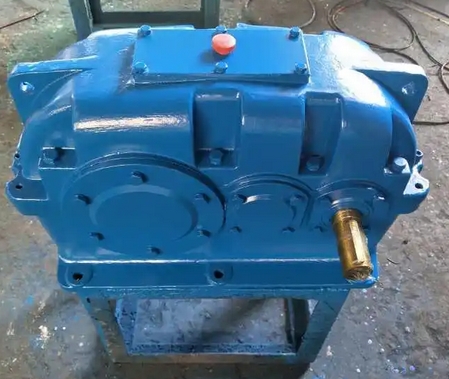What preventive measures are there for common failures of ZLY224-20-1 hard-toothed gear reducers?
Common faults of ZLY224-20-1 hard tooth reducer include gear tooth fatigue fracture, wear, corrosion, bearing failure, screw loosening, etc
Here are some preventive measures for common faults
:
Regular inspection and maintenance: Regularly inspect the internal parts of the gearbox, including gears, bearings, transmission chains, etc., to promptly detect wear, cracks, and other issues with the parts, and provide necessary lubrication and maintenance. Establish comprehensive maintenance records and regularly replace vulnerable parts based on usage and maintenance records.

Reasonable selection of usage environment: Avoid installing the reducer in damp and corrosive environments to prevent corrosion, rusting, and oxidation of gear teeth and internal components. If it is impossible to avoid humid environments, moisture-proof and rust proof measures can be taken, such as using moisture-proof covers and regularly applying rust inhibitors.
Pay attention to the use of load and speed: When using a reducer, it should be operated within its rated load and speed range to avoid overloading and operating at too high a speed, in order to prevent problems such as gear tooth surface fatigue fracture, increased wear, and premature bearing failure.
Ensure good lubrication: Choose lubricating oil suitable for the working conditions of the gearbox to ensure that the gears and transmission parts are well lubricated, reducing wear and friction. Regularly check the quality and quantity of lubricating oil, replenish or replace lubricating oil in a timely manner, and prevent problems such as tooth friction and wear caused by deteriorating lubricating oil quality or insufficient supply.
Standardized installation and debugging: Strictly follow the manufacturer's requirements for the installation and debugging of the reducer, ensuring accurate installation positions and firm connections of each component. During installation, it is necessary to ensure the levelness and verticality of the reducer to avoid problems such as poor gear meshing and uneven bearing force on the shaft caused by installation errors.
Optimize working environment: Ensure that the installation foundation of the reducer is stable, reduce interference from external vibration sources, and avoid vibration of the reducer caused by an unstable foundation. At the same time, ensure stable power supply voltage to prevent excessive voltage fluctuations from affecting the normal operation of the gearbox.
Adopting advanced monitoring technology: using online monitoring methods such as vibration and temperature to real-time grasp the operation status of equipment and timely detect potential faults and hidden dangers. For example, by monitoring vibration signals to determine the operating status of components such as gears and bearings, and by monitoring temperature changes to discover whether there are problems such as overload and poor lubrication.

